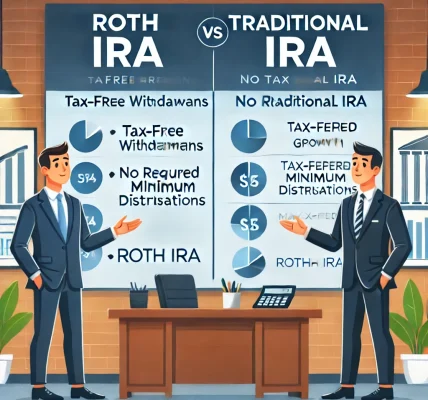Introduction
Planning for retirement is one of the most critical financial decisions you will make in your lifetime. Social Security benefits play a crucial role in providing financial stability during your retirement years. However, to maximize these benefits and ensure a comfortable retirement, you must have a strategic approach. This article will explore how Social Security fits into your retirement plan and provide actionable tips on how to get the most out of your benefits.
Understanding Social Security Benefits
Social Security is a government program designed to provide financial support to retirees, disabled individuals, and survivors of deceased workers. It is funded through payroll taxes under the Federal Insurance Contributions Act (FICA). The amount of Social Security benefits you receive depends on several factors, including:
- Your lifetime earnings
- The age at which you start claiming benefits
- The number of years you have worked and paid into the system
Eligibility for Social Security
To qualify for Social Security benefits, you must accumulate at least 40 work credits (approximately 10 years of work). Your benefit amount is calculated based on your highest 35 years of earnings.
The Best Age to Claim Social Security
One of the most critical decisions in maximizing your Social Security benefits is deciding when to start claiming them. Here’s how the claiming age impacts your benefits:
| Age to Claim | Impact on Benefits |
|---|---|
| 62 (Earliest Eligibility) | Reduced benefits (up to 30% lower) |
| Full Retirement Age (FRA, 66-67 depending on birth year) | 100% of your benefits |
| 70 (Maximum Benefits) | Increased benefits (up to 32% more than at FRA) |
Delaying Social Security benefits until age 70 results in an 8% increase in benefits per year beyond your Full Retirement Age (FRA). If you can afford to wait, this strategy can significantly boost your monthly payout.
Strategies to Maximize Social Security Benefits
1. Work for at Least 35 Years
Your Social Security benefits are calculated based on your highest 35 years of earnings. If you work fewer years, zeros are factored into the equation, reducing your benefit amount. To maximize benefits, aim for a full 35-year work history with steady earnings.
2. Delay Benefits if Possible
While you can start claiming benefits at 62, delaying until 70 can substantially increase your monthly checks. If you’re in good health and have other sources of income, waiting until 70 may be a financially smart move.
3. Coordinate with Your Spouse
Married couples have additional strategies to maximize their combined Social Security benefits, including:
- Spousal Benefits: A spouse can claim up to 50% of the higher-earning spouse’s benefits if they file at Full Retirement Age.
- Survivor Benefits: A widow or widower can receive 100% of their deceased spouse’s benefits if they delay claiming until Full Retirement Age.
- File and Suspend: This strategy allows one spouse to file for benefits and then suspend them, allowing the other spouse to claim spousal benefits while their own benefits continue to grow.
4. Consider Your Life Expectancy
If you have a family history of longevity, delaying benefits makes sense. However, if you have serious health concerns and need income sooner, claiming earlier may be the better choice.
5. Keep Working if You Can
If you claim Social Security before your Full Retirement Age and continue working, your benefits may be reduced if you earn above a certain threshold ($22,320 in 2024). However, once you reach FRA, these reductions no longer apply, and your benefits may be recalculated to account for additional earnings.
6. Minimize Taxes on Social Security Benefits
Depending on your income, Social Security benefits may be subject to federal taxes. To minimize taxes:
- Withdraw from tax-advantaged accounts strategically
- Utilize Roth IRAs, which provide tax-free withdrawals
- Consider delaying Social Security to reduce taxable income
How Social Security Fits Into Your Overall Retirement Plan
While Social Security provides a foundation for retirement income, it is not designed to cover all expenses. A well-rounded retirement plan should include:
- Employer-Sponsored Plans (401(k), 403(b)) – Contributing to a workplace retirement plan ensures additional financial security.
- Individual Retirement Accounts (IRAs) – Traditional and Roth IRAs provide tax advantages that complement Social Security.
- Personal Savings & Investments – Stocks, bonds, and real estate can generate supplemental income in retirement.
- Pensions – If you have a pension, it can work alongside Social Security to enhance your retirement income.
Common Mistakes to Avoid
1. Claiming Benefits Too Early
Many retirees claim benefits at 62 without considering the long-term impact. While this may be necessary for some, delaying benefits whenever possible leads to higher monthly payments.
2. Ignoring Spousal and Survivor Benefits
Failing to maximize spousal and survivor benefits can lead to a significant loss of income. Understanding how these benefits work ensures you get the most out of Social Security.
3. Relying Solely on Social Security
Social Security was never intended to be the sole source of retirement income. Diversifying your savings and investments is crucial for financial security.
4. Not Considering Taxes
Many retirees don’t realize that Social Security benefits can be taxed. Proper tax planning helps minimize tax burdens and maximize retirement income.
Conclusion
Maximizing your Social Security benefits requires careful planning and strategic decision-making. By understanding your claiming options, working longer, coordinating with your spouse, and incorporating Social Security into a broader retirement strategy, you can optimize your benefits and secure a more comfortable retirement.
Key Takeaways:
✅ Delaying Social Security until 70 increases benefits significantly.
✅ A 35-year work history ensures higher benefit calculations.
✅ Spousal and survivor benefits provide additional financial security.
✅ Social Security should be part of a diversified retirement plan.
✅ Tax-efficient withdrawal strategies help maximize net benefits.
By implementing these strategies, you can make the most of your Social Security benefits and enjoy a financially secure retirement.
4o




